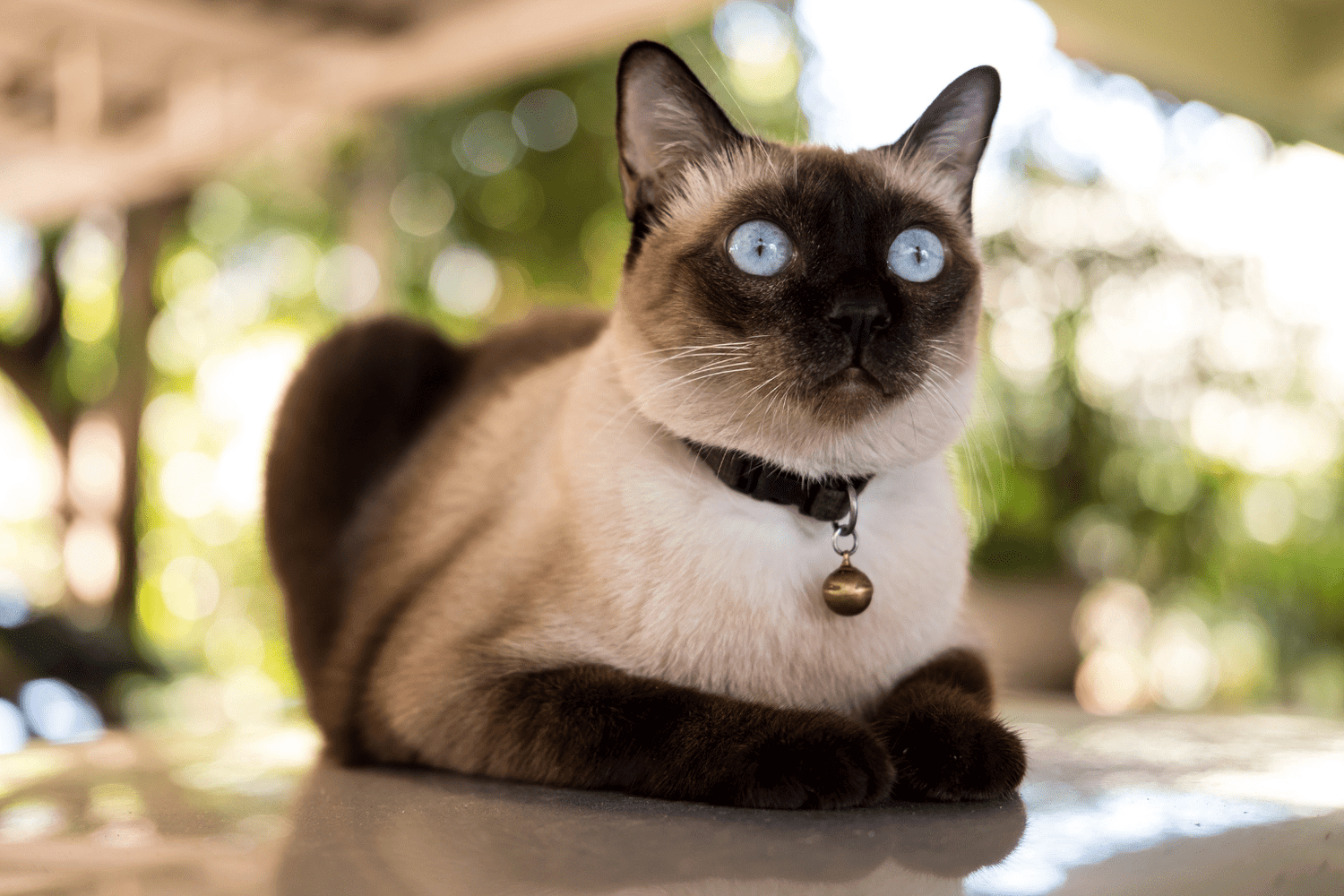Key Takeaways
- Essential care for cats includes more than just providing food and a litter box.
- Cats are obligate carnivores with unique biological needs that must be met.
- Meeting a cat's essential needs is crucial for their lifelong health and happiness.
- Understanding what is essential for cats helps prevent health issues related to improper care.
Table of Contents
- What Does "Essential" Truly Mean for Cats?
- The Building Blocks: Essential Nutrients Every Cat Can't Thrive Without
- Cat Nutrition 101: How to Choose Truly Complete & Balanced Food
- Wet vs. Dry vs. Fresh: Which Diet Supports Cats' Essentials Best?
- Hydration for Cats: Why Water Is Truly Essential (and Often Overlooked!)
- Safe, Natural Supplements: When and How to Support Your Cat's Essentials
- Beyond the Bowl: Environmental Essentials for a Thriving Cat Life
- Special Essentials: Cats in Their Golden Years, Multi-Cat Homes & Kittens
- How to Spot (and Fix) Missing Essentials: Deficiency Signs & Solutions
- Essential Wrap-Up: Building Your Cat's Best Life Foundation
Essential for Cats, What Every Cat Parent Needs to Know for Lifelong Health
When my Border Collie mix Tango was struggling with prescription side effects, I learned that what's essential for cats goes far beyond a food bowl and litter box. As obligate carnivores with unique biology, cats have non-negotiable needs that, when met properly, create the foundation for vibrant health and happiness. Over-the-counter natural treatments for life-long support of dogs & cats general health can play a key role in meeting these needs.
Understanding these essentials isn't about perfection, it's about giving your feline family member the best shot at a long, comfortable life. Whether you're welcoming your first kitten or supporting a senior cat, these fundamentals remain constant. For additional support, consider exploring gentle, natural health solutions for cats to help maintain their overall wellness.
What Does "Essential" Truly Mean for Cats?
Essential for cats means the non-negotiable elements required for survival, health, and wellbeing. Unlike dogs, cats evolved as desert hunters with specific biological requirements that can't be compromised without consequences.
From a veterinary perspective, essentials include complete nutrition, adequate hydration, environmental safety, and preventive care. The holistic view expands this to include emotional security, mental stimulation, and natural support for the body's healing processes.
The 6 Essentials Every Cat Needs
- Species-appropriate nutrition (animal protein focus)
- Adequate hydration (often overlooked)
- Safe, enriched environment (stress-free zones)
- Comfort and security (hiding spots, routine)
- Mental and physical enrichment (play, exploration)
- Preventive health support (natural and veterinary)
These essentials work together, compromise one, and you'll likely see effects in others. A dehydrated cat may develop urinary issues, while a stressed cat often stops eating properly.
The Building Blocks: Essential Nutrients Every Cat Can't Thrive Without

Cats require specific nutrients that their bodies cannot produce in sufficient quantities. Unlike omnivores, they've lost the ability to synthesize certain compounds, making dietary sources absolutely critical.
Animal protein tops the list, cats need amino acids like taurine and arginine that are abundant in animal tissue but absent or insufficient in plant sources. Taurine deficiency leads to heart disease and blindness, while arginine deficiency can cause neurological symptoms within hours.
Essential fatty acids, particularly arachidonic acid found only in animal fats, support skin health and immune function. Water-soluble vitamins like B-complex must be replenished regularly since cats can't store them effectively.
| Nutrient | What It Does | Deficiency Signs | Best Sources |
|---|---|---|---|
| Taurine | Heart and eye function | Heart disease, vision problems | Animal muscle meat |
| Arachidonic Acid | Skin and coat health | Dull coat, skin issues | Animal fats |
| Vitamin A (preformed) | Vision, immune system | Night blindness, infections | Liver, fish |
| Niacin (B3) | Energy balance | Lethargy, appetite loss | Animal protein |
The key insight? Cats can't convert plant-based precursors efficiently. They need the "finished" versions of nutrients that other animals can manufacture internally. For more on what foods are safe or risky, see this guide to the best and worst human foods for cats.
Cat Nutrition 101: How to Choose Truly Complete & Balanced Food
"Complete and balanced" on cat food labels means the product meets AAFCO (Association of American Feed Control Officials) standards for all essential nutrients. However, meeting minimums isn't the same as optimizing health.
Look beyond marketing claims to the guaranteed analysis and ingredient list. The first ingredient should be a named animal protein, and the crude protein percentage should be at least 26% for adult cats, higher for kittens.
Quality indicators include feeding trial statements (not just nutrient profiles), named fat sources, and minimal plant-based fillers. Avoid foods where corn, wheat, or soy appear in the first five ingredients, these don't align with feline biology.
Three practical evaluation steps: Check the protein source quality, verify the moisture content meets your cat's needs, and ensure the food has been tested through actual feeding trials, not just formulated to meet standards.
Wet vs. Dry vs. Fresh: Which Diet Supports Cats' Essentials Best?
Each diet type offers distinct advantages for meeting essential cat needs, but wet food generally aligns best with feline biology due to moisture content and protein concentration.
Wet food provides 70-80% moisture, mimicking the water content of prey animals. It's typically higher in protein and lower in carbohydrates than dry alternatives. Dry food offers convenience and dental benefits but requires vigilant hydration monitoring.
Fresh or home-prepared diets can be optimal when properly formulated, but they require careful attention to nutritional completeness. Many cat parents find success combining approaches, perhaps high-quality wet food as the foundation with selective dry food for convenience.
Quick Decision Guide
Choose wet food if: Your cat needs more hydration or has kidney concerns
Choose dry food if: Convenience is priority and your cat drinks plenty of water
Choose fresh food if: You can commit to proper formulation and preparation
Hydration for Cats: Why Water Is Truly Essential (and Often Overlooked!)

Cats evolved from desert ancestors, making them naturally low-thirst drinkers who often don't consume enough water. This biological quirk means many house cats live in a state of mild dehydration, which can lead to serious health issues over time. For more on protecting your cat's kidneys, check out these 7 tips for preventing kidney disease in cats.
Signs your cat may need more water: Dark yellow urine, infrequent urination, lethargy, or dry gums. Long-term dehydration contributes to urinary tract infections, kidney disease, and digestive issues, all preventable with proper hydration.
Three proven ways to boost your cat's water intake: First, provide multiple fresh water sources using ceramic or stainless steel bowls (plastic can harbor bacteria). Second, consider a water fountain, many cats prefer moving water. Third, add a splash of low-sodium chicken broth to make water more appealing.
Monitor your cat's hydration by checking water bowl levels daily and observing litter box habits. Healthy cats should urinate at least twice daily with light yellow urine.
Safe, Natural Supplements: When and How to Support Your Cat's Essentials
Even cats eating high-quality diets sometimes need extra support during stressful periods, illness recovery, or as they age. This is where gentle, natural supplementation becomes essential for cats who want to maintain their best health without harsh side effects. Natural treatments for cats can be a valuable addition to your cat's wellness routine.
Natural homeopathic remedies work by supporting your cat's own healing mechanisms rather than forcing changes in the body. Unlike synthetic medications, these gentle pellets rarely cause adverse reactions and can be safely used alongside conventional treatments.
BestLife4Pets offers targeted support for common feline health concerns. Our Cat UTI, Kidney & Bladder Support helps support urinary tract health naturally, while Cat Hip and Joint Pain Relief helps senior cats maintain comfortable movement. For cats dealing with digestive upset, Cat Laxative Constipation Relief provides gentle relief without disrupting the gut microbiome.
Bailey, a 12-year-old tabby, started showing signs of stiff joints and reduced playfulness. After just two weeks of daily Cat Hip and Joint Pain Relief pellets mixed with his food, Bailey's family noticed him jumping onto his favorite windowsill again, something he hadn't done in months.
Dosing is simple: most cats readily accept the small pellets mixed with food, though some prefer them offered as treats. For multi-cat households, individual dosing ensures each cat gets appropriate support for their unique needs.
These statements have not been evaluated by the FDA. This product is not intended to diagnose, treat, cure, or prevent any disease. Not a substitute for professional veterinary advice.
Beyond the Bowl: Environmental Essentials for a Thriving Cat Life
A cat's environment directly impacts their physical and mental health. Stress from poor environmental setup can suppress immune function, trigger behavioral issues, and even affect digestion, making environmental essentials just as important as proper nutrition. For a comprehensive overview of routine health care, see this routine health care of cats guide.
Litter box essentials: Provide one box per cat plus one extra, placed in quiet, accessible locations. Clean boxes daily and use unscented, clumping litter most cats prefer. Poor litter box management is a leading cause of house soiling and urinary problems.
Every cat needs dedicated spaces for different activities: high perches for surveying territory, cozy hiding spots for security, and scratching surfaces for claw maintenance and stress relief. Vertical space is especially essential for cats, cat trees or wall shelves satisfy their natural climbing instincts.
| Essential Element | Why It Matters | Quick Setup Tip |
|---|---|---|
| Scratching Posts | Claw health, territory marking, stress relief | Place near sleeping areas and entrances |
| High Perches | Security, territory observation | Cat trees or sturdy shelves 4+ feet high |
| Hiding Spots | Stress reduction, safe retreat | Cardboard boxes or cat caves work perfectly |
| Interactive Toys | Mental stimulation, hunting instinct | Rotate toys weekly to maintain interest |
Signs your cat's environment needs improvement include excessive hiding, aggression between cats, inappropriate elimination, or destructive scratching on furniture. Most environmental issues resolve quickly with proper setup adjustments.
Special Essentials: Cats in Their Golden Years, Multi-Cat Homes & Kittens

Senior cats need modified essentials to maintain comfort and dignity. Provide lower-entry litter boxes, orthopedic bedding, and easily accessible food and water stations. Many benefit from gentle joint support supplements and more frequent, smaller meals to aid digestion. For more advice on caring for older pets, see these tips for taking care of your aging pets.
Multi-cat households face unique challenges in resource management. The "one plus one" rule applies here, provide at least one litter box per cat plus one extra, and establish multiple feeding stations to prevent competition. Vertical territory becomes essential for cats in crowded homes, so invest in tall cat trees and wall-mounted perches.
Growing kittens have rapidly changing essential needs. Their protein requirements are significantly higher than adult cats, and they benefit from more frequent meals throughout the day. Safe socialization during their first 16 weeks shapes their entire relationship with their environment.
How to Spot (and Fix) Missing Essentials: Deficiency Signs & Solutions
Your cat's body language and behavior tell the story of whether their essential needs are being met. Nutritional gaps often show up as dull coat, excessive shedding, or changes in eating patterns. A cat who suddenly becomes pickier about food might be signaling that something in their current diet isn't working.
Environmental stress manifests differently, increased hiding, inappropriate elimination outside the litter box, or aggressive behavior toward other pets. These aren't behavioral problems to punish; they're communication about unmet essential needs. For additional wellness guidance, you can also review this cat-friendly clinic wellness programme.
Top 5 Warning Signs & Quick Fixes
- Decreased water intake: Switch to a water fountain or add wet food
- Excessive scratching/grooming: Review diet for allergens, add omega fatty acids
- Lethargy in senior cats: Consider gentle joint support and easier access to resources
- Hiding or withdrawal: Audit the environment for stressors, create more safe spaces
- Digestive upset: Evaluate food quality and consider natural digestive support
When you notice concerning changes, start with the basics: ensure fresh water availability, review the ingredient list on their food, and assess whether their environment feels safe and enriching. Many issues resolve when we address these fundamental essentials for cats before they become serious health problems.
Natural support can bridge gaps while you work with your veterinarian on underlying issues. BestLife4Pets offers gentle pellet remedies that support digestive comfort, joint mobility, and overall vitality, perfect for cats who need a little extra help maintaining their essential wellness foundations.
Essential Wrap-Up: Building Your Cat's Best Life Foundation
Understanding what's truly essential for cats goes far beyond a simple checklist. It's about creating a holistic environment where nutrition, hydration, safety, comfort, and enrichment work together to support your cat's natural vitality and happiness.
Every cat's essential needs are unique, shaped by their age, health status, personality, and living situation. The senior cat who needs joint support, the anxious rescue who requires extra environmental security, the kitten discovering their world, each deserves care tailored to their individual essentials. This is where gentle, natural support shines, offering targeted help without disrupting the delicate balance of feline health.
Your journey in providing essential for cats care is ongoing, evolving as your feline family member grows and changes. Trust your observations, stay curious about new ways to support their wellness, and remember that small, consistent improvements often create the biggest transformations in your cat's quality of life.
The information in this guide is not a substitute for professional veterinary advice. Always consult with your veterinarian for specific health concerns or before making significant changes to your cat's care routine.
Frequently Asked Questions
What are the essential nutrients that cats need in their diet and why can't they thrive without them?
Cats require a diet rich in animal-based proteins and specific nutrients that support their unique metabolism as obligate carnivores. Without these essentials, they can experience poor health, low energy, and compromised immune function because their bodies rely on these nutrients for vital processes like muscle maintenance and organ function.
How does adequate hydration impact a cat's overall health and what are common signs of dehydration?
Proper hydration supports kidney function, digestion, and overall energy levels in cats, helping to prevent urinary and other health issues. Signs of dehydration include lethargy, dry gums, sunken eyes, and reduced skin elasticity, which should prompt timely attention to increase water intake.
What environmental factors are considered essential for a cat's mental and physical wellbeing?
Cats thrive in environments that offer safety, mental stimulation, and opportunities for natural behaviors like climbing and hiding. Providing stress-free zones, interactive play, and cozy resting spots helps maintain their emotional balance and physical health.
How can cat owners identify and address nutrient deficiencies or other missing essentials in their cat's care?
Owners can watch for changes like dull coat, weight loss, low energy, or unusual behavior as signals of missing essentials. Consulting a vet and considering gentle, natural support options can help restore balance and keep cats thriving.



